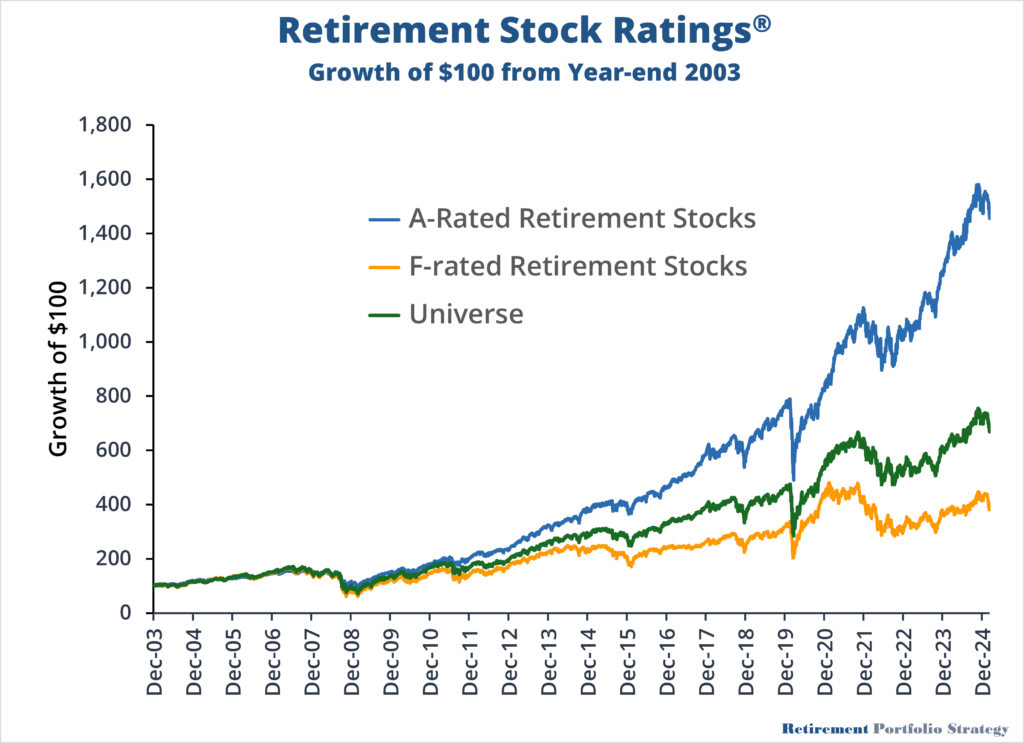Retirement Stock Ratings®
Retirement Stock Ratings® is a quantitative-based rating system to help investors saving for retirement or already enjoying retirement identify attractive retirement stocks.
The Retirement Stock Ratings® system starts with the 1,000 largest U.S. stocks. Why start with big stocks? Bigger companies tend to be more established businesses with greater staying power than smaller companies. As a group, bigger stocks also have more stable share prices than small stocks. Staying power and share price stability are important attributes for a retirement stock.
Big doesn’t always translate into durability and stable prices though. Enron, AIG, Lehman Brothers, Tyco, WorldCom, and countless others were very large businesses, but they still collapsed.
To reduce the chances of buying a big company that ends up on the who’s who list of Fortune 500 failures, we filter out the most speculative stocks from the list of 1,000 we start with. As a group, the most speculative stocks have higher risk of failure, stomach-churning sell-offs, and dismal performance.
We define speculative stocks using a composite of variables that measure quality and share price stability.
The stocks that are left after we eliminate the most speculative stocks from the starting group of 1,000 are eligible to be rated using our Retirement Stock Ratings® system.
The Retirement Stock Ratings® system evaluates stocks on a comprehensive set of criteria that has historically generated successful investment outcomes. Stocks are scored on timeliness, value, sentiment, profitability, durability, and business cycle risk among other factors.
Retirement Stock Ratings® use an A through F grading scale, with A being the best and F being the worst. Stocks with A and B ratings are considered prime candidates for acquisition. Conversely, D and F rated stocks should be flagged as potential sales or stocks to avoid.
The chart below shows the performance of As and Fs vs. the entire universe of 1,000 stocks we start with. The chart assumes equal weighting and monthly rebalancing. These results are based on a simulation and do not account for transaction costs or fees.

Risks and Limitations
Like with any stock rating system, Retirement Stock Ratings® should serve as an initial step in the investment decision-making process. It’s crucial to conduct your own in-depth research or consult with a financial advisor before making any investment decisions. The quantitative and qualitative analyses used to generate Retirement Stock Ratings® come with inherent risks and limitations. Although the information used to generate the Retirement Stock Ratings® is taken from sources believed to be reliable, its accuracy and completeness cannot be guaranteed.
It’s important to remember that the past performance of the Retirement Stock Ratings® system is not a predictor of future results. Additionally, these ratings do not consider your personal financial situation or needs. The stocks that are highlighted may not be appropriate for every investor. Furthermore, none of the information provided about stock ratings or companies should be interpreted as a direct solicitation or recommendation to buy or sell any securities.
